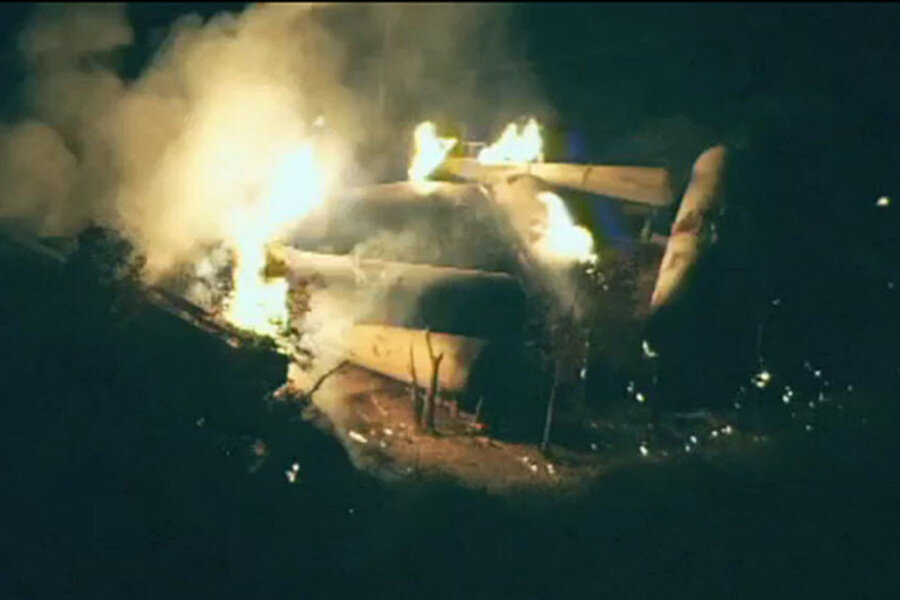Illinois train explosion: How safe are ethanol tankers?
Loading...
| Chicago
Fire crews in a central Illinois town are fighting to prevent a possible chemical explosion following the derailment of a freight train that contains tankers of burning ethanol, a component used in gasoline production.
Twenty-six cars of the 131-car train derailed early Friday morning in Tisilkwa, Ill., about 115 miles southwest of Chicago, apparently with nine carrying ethanol. The entire town of Tisilkwa was evacuated Friday due to fears about a possible chemical explosion.
Safety officials first decided to let the flames die off on their own, but by Friday afternoon, following fears the tanks will break open due to the mounting heat, the firefighters changed course and are currently pouring water and foam on the tankers.
It is not yet clear what caused the accident, but the derailment comes at a time when the shipment of ethanol by rail has increased dramatically. At the same time, rail accidents involving hazardous materials have shown modest declines during the past 10 years.
Transporting ethanol by rail increased 400 percent between 2000 and 2009, according to the Association of American Railroads (AAR), an industry advocacy group located in Washington, D.C. Today, there are more than 200,000 carloads of ethanol being shipped, which Patty Riley, a spokesperson for the AAR, says is the result of the increase in ethanol production during the past decade.
Data from the Renewable Fuels Association shows ethanol production in the US increased 64 percent between 2001 and 2010.
Shipping ethanol is safer today because of the newer fleet of tank cars specifically designed to carry the material, says Chris Barkan, director of the Rail Transportation and Engineering Center at the University of Illinois at Champaign.
“There’s no question that ethanol traffic has increased due to the big demand for ethanol fuels. It doesn’t make it any more dangerous to transport ethanol,” Mr. Barkan says.
Despite the rise in production and shipping, ethanol still represents a small slice – just 1.1 percent in 2009 – of total material shipped by rail.
The accidental release of hazardous materials by rail has decreased since 2007, when 27 such incidents were reported, according to the Federal Railroad Administration. In 2010, there were 10.
A number of factors will be looked at to determine the cause of the accident, including the condition of the tracks, the length of the train and how the train was assembled in the rail yard.
One area where investigators will likely look will be where the ethanol tankers were placed along the train line in correspondence to the other cars, says Paul Metaxatos, associate director for research programs at the Urban Transportation Center at the University of Illinois at Chicago.
There is currently no policy regulating the placement of cars carrying hazardous materials, Mr. Metaxatos says, but if investigators find out that “in this situation, shipping ethanol makes a difference in the number of derailments, this will result in a change of policy.”
Federal and state agencies, as well as hazardous material teams from local counties, are on site to investigate.





